WINNERS REVEALED: CXO CLOUD
CONNECT 2024 EXCLUSIVE: DYNATRACE CEO RICK MCCONNELL
SOLARWINDS: UNLOCKING THE ITSM ADVANTAGE


WINNERS REVEALED: CXO CLOUD
CONNECT 2024 EXCLUSIVE: DYNATRACE CEO RICK MCCONNELL
SOLARWINDS: UNLOCKING THE ITSM ADVANTAGE

LOGITECH’S LOUBNA IMENCHAL ON AI-POWERED INNOVATIONS FOR THE NEXT-GEN WORKSPACE
www.cxoinsightme.com
18 GITEX GLOBAL 2024
A glimpse at some of the key players taking part in the show
26 CELEBRATING CLOUD EXCELLENCE
Winners revealed: CXO Cloud Connect Conference and Awards 2024
INTERVIEWS
42 MIND THE AI GAP
Cisco’s Abdelilah Nejjari on how AI is reshaping the region’s talent landscape
44 POWERING BUSINESS RESILIENCE
Dynatrace’s Rick McConnell on AI-driven observability and local talent empowerment in the region
VIEWPOINTS
40 BEYOND METRICS
IFS spotlights APM’s evolving role in enabling business transformation
50 GREEN IS THE NEW BLUEPRINT
Epicor highlights how Cloud ERP can drive sustainability and profitability
60 The latest gears and gadgets to keep you ahead of the curve
Logitech’s Loubna Imenchal on the company’s vision for revolutionising collaboration in the hybrid era




245+ 70%
adversaries tracked globally by CrowdStrike
YoY increase in adversary exploitation of RMM tools of hands-on-keyboard attacks were executed by eCrime actors
86%

Outpace today’s most sophisticated adversaries


Read the Report now
Published by

October is an exciting month for the tech industry in the region. As we kick off the month, GITEX GLOBAL takes centre stage, promising to be a leading platform for showcasing the latest in technological innovation.
This month will also see us, here at CXO Insight ME, host our annual ICT Leadership Awards on October 14 at the Taj Dubai. These awards are designed to recognise the visionaries and innovators who are shaping the future of technology. It promises to be an evening of celebration and insight that will shine a spotlight on those driving progress in the industry.
For our October cover story, we feature Loubna Imenchal, Head of Enterprise Business, Africa, Middle East, Turkey, and Central Asia (AMETCA) at Logitech. She shares insights into Logitech’s strategic approach to revolutionising collaboration in the hybrid work era. She highlights how hybrid solutions are becoming essential for bridging the gap between physical and digital workspaces, and how the integration of artificial intelligence into collaboration tools is proving to be a key driver of success. The full interview is available on page 12.
This issue also covers the recent CXO Cloud Connect Conference and Awards, where we recognised key achievements in cloud innovation
from enterprises and technology providers alike. Additionally, we offer a preview of the companies participating in GITEX GLOBAL and the cuttingedge technologies they plan to showcase.
This edition features a thought leadership from IFS, focusing on the evolving role of Asset Performance Management (APM) in enabling digital transformation. We also highlight insights from Epicor on how Cloud ERP can drive both sustainability and profitability for businesses.
This month will surely be filled with exciting updates and announcements from the tech space, and I, for one, can’t wait.
We look forward to meeting all of you at GITEX GLOBAL. You can visit the Insight Media & Publishing team at Hall 8-18
See you then!
Managing Editor
Adelle Geronimo
adelleg@insightmediame.com
+97156 - 4847568
Production Head
James Tharian
jamest@insightmediame.com
+97156 - 4945966
Adelle Geronimo
Managing Editor
Commercial Director
Merle Carrasco
merlec@insightmediame.com
+97155 - 1181730
Administration Manager
Fahida Afaf Bangod fahidaa@insightmediame.com
+97156 - 5741456
Operations Director
Rajeesh Nair
rajeeshm@insightmediame.com
+97155 - 9383094
Designer
Anup Sathyan
While the publisher has made all efforts to ensure the accuracy of information in this magazine, they will not be held responsible for any errors

G42 and Microsoft have announced the establishment of two new centres in Abu Dhabi, aimed at advancing Responsible AI and addressing global challenges through technology. This move builds on the partnership the two companies formed earlier this year, marking a significant step toward ethical and transparent AI development.
The first centre, co-funded by G42 and Microsoft and backed by the UAE’s Artificial Intelligence and Advanced Technology Council, will
focus on identifying and developing best practices for Responsible AI. The centre will bring together experts from academia and the private sector to ensure AI is used responsibly, particularly in the Middle East and developing regions.
The second centre is an extension of Microsoft’s AI for Good Research Lab, and its first in the Middle East. It will support AI projects tackling societal issues such as climate change, poverty, and food security. This lab will work
Cisco has announced plans to establish a Point of Presence (PoP) for cloud-delivered security in the United Arab Emirates (UAE). This initiative aims to help customers protect their users, infrastructure, and investments against threat actors. The move is part of Cisco’s continued effort to empower organisations locally and regionally with flexible security services and data loss protection for devices, remote users and distributed locations. Cisco targets service availability by the end of 2024 for the Secure Service Edge (SSE) PoP.

“Today’s announcement reaffirms Cisco’s commitment to rapidly extend its global reach for customers and provide
By advancing Responsible AI together with Microsoft, we are creating a framework for AI to serve all of humanity.
PENG XIAO G42
closely with partners in the Middle East and Africa, developing AI models for underrepresented languages and enhancing climate resilience.
“By advancing Responsible AI together with Microsoft, we are creating a framework for AI to serve all of humanity,” said Peng Xiao, Group CEO, G42.
Brad Smith, Vice Chair and President of Microsoft, said, “Today’s steps will add to the important progress Microsoft and G42 are making to broaden access to the responsible, safe, and secure use of artificial intelligence.”
This partnership aims to position Abu Dhabi as a global AI hub while ensuring the safe and ethical deployment of AI technologies.
The new centres aim to drive AI innovation while ensuring its safe application.
advanced cloud security protection and services to the UAE and the surrounding region,” said Abdelilah Nejjari, Managing Director for Cisco in the Gulf and Levant region. “Our goal is to help companies in the UAE accelerate the deployment of cybersecurity capabilities by adopting a platform approach. This will enable the seamless integration of various solutions within their stack, allowing them to maximise their potential.”
The new PoP will support Cisco’s cloud services including its Secure Service Edge (SSE) solution, Cisco Secure Access. This cloud-delivered platform helps organisations solve a variety of security challenges.










Sharjah Police and the Sharjah Digital Office have discussed enhancing collaboration in data management and governance to support government entities in implementing standardized practices.
In a recent meeting, Sheikh Saud
bin Sultan Al Qasimi, Director of the Sharjah Digital Office, and Major General Saif Al Zari Al Shamsi, Commanderin-Chief of Sharjah Police, highlighted the importance of this partnership in advancing Sharjah’s digital leadership vision.
Major General Al Shamsi commended the efforts of the Sharjah Digital Office in driving the emirate’s digital transformation. He reiterated Sharjah Police’s commitment to backing government initiatives and contributing to the emirate’s future development.
The Sharjah Digital Office presented an innovative project focused on data management and governance, aimed at streamlining processes and improving data quality across various government departments.
Concluding the meeting, Major General Al Shamsi emphasized the need for ongoing cooperation and knowledge exchange to achieve long-term development goals and strengthen Sharjah’s position as a leader in digital government.
The meeting was also attended by Major General Abdullah Mubarak bin Amer, Deputy Commander-in-Chief of Sharjah Police, and Lamia Obaid Al Shamsi, Director of the Sharjah Digital Office, alongside other key officials.
Salesforce has officially opened a new office in Dubai Internet City, marking a significant step in its expansion within the United Arab Emirates (UAE). This move highlights Salesforce’s commitment to supporting AI-driven innovation, customer success, and growth in the region.
The inauguration ceremony saw the attendance of His Excellency Omar Sultan AlOlama, Minister of State for AI, Digital Economy, and Remote Work Applications, alongside key industry leaders such as Malek Al Malek, Chairman of TECOM Group PJSC, and Abdulla Belhoul, CEO of TECOM Group.
The new office features advanced collaboration and innovation spaces, designed to showcase Salesforce’s latest AI technologies. Salesforce is rapidly growing in the UAE, with more companies investing in AI-powered digital transformation.
“Our new presence in Dubai Internet City further strengthens our dedication to serving customers in the UAE. We are especially excited to bring the AI innovations announced at Dreamforce

empowering public and private sector organisations to thrive by leveraging AI and cloud-based solutions to optimise data use, enhance agility and truly prioritise customer centricity,” said Thierry Nicault, Area Vice President and General Manager, Salesforce Middle East. “Additionally, our participation in Gitex later this month further underscores this commitment, as
we continue to engage with the region’s most forward-thinking enterprises to drive the next wave of digital transformation.”
Salesforce’s presence in the UAE strengthens its ability to partner with both public and private sectors, leveraging AI and cloud technologies to drive the next wave of digital transformation across the region.
IBM has launched Himmah (“determination”), the local edition of its IBM Consulting Associates programme, aimed at upskilling Saudi talent. Unveiled at the Think Leadership Exchange event in Riyadh, Himmah is designed to empower the next generation of leaders in alignment with Saudi Vision 2030.
The 12-month programme will provide participants with hands-on experience across various fields within IBM Consulting, including consulting, technical specialisation, design, data science, and development. Participants will also receive training in technologies such as hybrid cloud and AI. The initiative aims to create a skilled workforce prepared to meet the Kingdom’s growing demand for technological innovation.
In addition to technical skills, the Himmah programme focuses on soft skills development and offers access to IBM’s Consulting Advantage platform, an AIpowered system that assists consultants through the use of technology from IBM and its strategic partners. After completing the initial five-week training period, participants will be placed on relevant

projects, allowing them to further develop their expertise with guidance from senior IBM professionals.
Khaled Al-Ofaysan, Managing Partner and Country Manager at IBM Consulting Saudi Arabia, emphasised IBM’s commitment to fostering local talent and supporting Saudi Arabia’s Vision 2030. He stated, “We are thrilled to welcome Saudi
candidates to the Himmah programme, which reflects our dedication to investing in the country’s future.”
The Himmah programme is part of IBM’s broader corporate responsibility initiatives, including its global IBM SkillsBuild programme, which provides free educational resources to learners worldwide.

AI71, a venture that develops productivity tools powered by the Technology Innovation Institute’s Falcon AI models, has awarded the top prize in its global Falcon Hackathon to the UAE’s Sirocco Ventures for creating a high-performance AI-powered platform
that allows businesses to create customised chatbots with minimal coding.
The 10-day hackathon, co-hosted by lablab.ai, was designed to promote AI innovation and open-source AI. It was also an opportunity for nearly 5,000 participants to test the beta version of AI71’s new API Hub, which will provide pay-as-you-go access to the globally ranked Falcon AI models for the first time, allowing coders without access to large amounts of compute power to experiment with Falcon.
Reda Nidhakou, Acting CEO, VentureOne – AI71’s parent company, said, “The Falcon Hackathon was a key opportunity for us to drive innovation and to make Falcon accessible to even more people through exclusive first use of our API Hub. It was exciting to gather thousands of participants from around
the world to develop creative solutions using Falcon, and to see AI being applied to so many different real-world use cases. This is our ultimate goal at AI71.”
Team Investiboard was named the first runner-up for their virtual investigation platform designed to help investigators and police streamline investigations and information gathering. They received $6,000 in cash and compute. EthiSecure.AI was the second runner-up with a platform that provides compliance, risk management, and real-time monitoring of LLM chatbots. They received $4,000 in cash and compute.
The winners were chosen from over 500 teams from 141 countries, who created a total of 132 different applications in the education, healthcare, legal and retail domains.
Go beyond traditional IT monitoring.
Actionable, AI-powered insights across any environment.


Loubna Imenchal, Head of Enterprise Business, Africa, Middle East, Turkey, Central Asia (AMETCA), Logitech, shares insights into the company’s vision for revolutionising collaboration in the hybrid era
As organisations navigate the complexities of integrating remote and in-office teams, the demand for seamless communication and efficient workflow management has never been greater. Hybrid solutions not only bridge the gap between physical and digital workspaces but also empower employees to collaborate effortlessly, regardless of their location. These tools enhance productivity, foster innovation, and ensure that teams remain connected and engaged. Furthermore, as businesses adapt to this new normal, the role of artificial intelligence in enhancing these collaboration tools is becoming increasingly apparent.
We caught up with Loubna Imenchal, Head of Enterprise Business, Africa, Middle East, Turkey, Central Asia (AMETCA), Logitech, to discuss the company’s commitment to developing innovative collaboration tools and their vision for AIenhanced products that support and elevate the hybrid work experience.
How has the shift to hybrid work influenced Logitech’s product strategy, and what trends are you observing in the market?
The shift to hybrid work is impacting nearly every organisation. With a focus on creating seamless integration between physical and digital workspaces, flexible tech for the everywhere workplace is at the heart of everything Logitech designs. In response to the increasing global demand for flexible solutions, we’ve developed tools like the Zone 305 headset and MeetUp 2 to enhance collaboration and boost productivity.
In addition to the need for seamless collaboration and productivity, sustainability has
become an important business imperative for more organisations, IT leaders and professionals. Organisations are now reassessing their hybrid work models with a stronger focus on ecofriendly practices—ranging from using energyefficient devices to reducing travel—to lower their environmental impact.
Logitech’s strategy continues to evolve with these trends, positioning us as a leader in delivering innovative, secure, and sustainable solutions for hybrid work.
Can you provide an overview of how Logitech’s latest products—Sync, MeetUp 2, and the Zone 305 Headset—are designed to support modern workplace needs?
Logitech’s latest products—Sync, MeetUp 2, and the Zone 305 Headset—are designed to meet the evolving demands of modern workplaces by enhancing collaboration, flexibility, and efficiency.
The MeetUp 2 is a next-gen all-in-one conference camera, tailored for small to mediumsized meeting spaces. Its advanced AI autoframing technology ensures that all participants are clearly visible, while its enhanced microphone and speaker system delivers crystal-clear audio, making it perfect for seamless video conferencing. This functionality is crucial for creating engaging hybrid meetings, where remote and in-office participants can connect effortlessly.
The Zone 305 headset is equipped with dual noise-cancelling microphones that eliminate background noise, allowing employees in hybrid and remote settings to concentrate without distractions, thus improving communication and productivity. Its comfortable design also supports long hours of use, making it ideal for today’s dynamic work environment.
Logitech Sync provides a centralised platform for IT teams to manage, monitor, and update video conferencing devices remotely, reducing downtime and optimizing device usage across the organisation. This capability not only enhances operational efficiency but also ensures that all employees have access to the latest technology, thereby fostering a more productive and connected workplace.
Could you elaborate on the role of AI in Logitech’s product suite? How does it enhance user experience, device management, and meeting productivity?
Logitech has been using AIenhanced features in conference room devices for years to create experiences that focus on the human and deepen engagement in meetings. AI plays a pivotal role in enhancing the user experience, device management, and meeting productivity within Logitech’s product suite. Tools like Sync, paired with the Tap Scheduler, streamline conference room bookings, reducing conflicts. AI Viewfinder is another innovation designed to improve the visual experience for meeting attendees. The AI Viewfinder in Rally Bar and Rally Bar Mini will detect when an ad-hoc meeting is happening
and automatically switch the room status to occupied, optimizing space management.
The MeetUp 2 camera also leverages AI-driven technology with features like auto-framing and speaker tracking, creating a more immersive, natural meeting experience by focusing on active speakers. Similarly, the Brio 705 webcam uses AI to enhance image quality, ensuring users appear clear and well-lit in various lighting conditions. This suite of AI capabilities transforms virtual meetings, making them more engaging, productive, and seamlessly managed.
How does Logitech’s approach to device management and collaboration technology cater to both large enterprises and small businesses?
As we witness organisations increasingly adopt flexible work models, the demand for intelligent solutions that facilitate seamless interactions between the hybrid team will only grow
Logitech’s approach to device management and collaboration technology is designed to serve both large enterprises and small businesses by offering scalable, flexible solutions that meet the diverse needs of the modern workplace. For instance, MeetUp 2 has brought video collaboration beyond the traditional boardroom, making it accessible and affordable for smaller huddle spaces, which are increasingly important in hybrid work environments. Through Logitech for Business, we enable collaboration across various workspaces, from video conferencing to shared desking, for organisations of all sizes. Our solutions, software, and services are tailored to support enterprises, SMBs, and the public sector, ensuring that businesses can deploy, manage, and scale their collaboration technology seamlessly. This approach allows companies to improve productivity, regardless of their size, and adapt to the host of changing demands in today’s hybrid workplace.
How is Logitech incorporating sustainability into its product development and manufacturing processes?
Sustainability is at the core of Logitech’s product development and manufacturing processes. We lead

the way with products like the Zone 305 headset, made from 55 percent post-consumer recycled plastic, and MeetUp 2, which incorporates 62 percent recycled plastic. These innovations help businesses minimise their environmental impact while staying technologically advanced. In fact, two-thirds of our products, including those running on CollabOS, utilise post-consumer recycled plastic, significantly reducing our carbon footprint. Our long-term goal is to empower businesses with userfriendly, cutting-edge solutions while championing sustainable practices
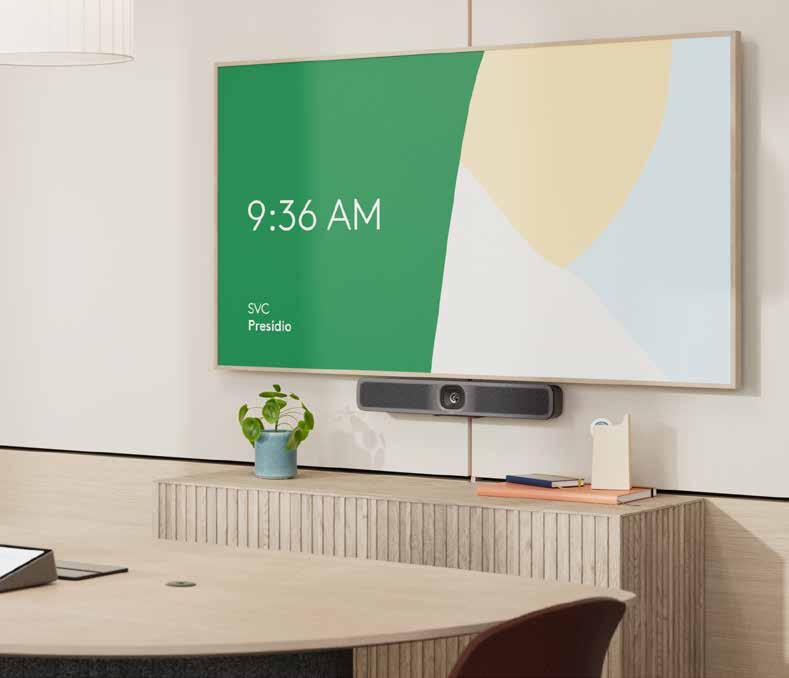
across all stages of product design and lifecycle management. Through these efforts, we are shaping a future where innovative, AI-driven technology meets sustainable design.
How do you see AI and automation shaping the future of business collaboration, and what role will Logitech play in this evolution?
There is no doubt that AI and automation will continue to revolutionise business collaboration - enhancing communication, streamlining workflows, and
improving overall efficiency. As we witness organisations increasingly adopt flexible work models, the demand for intelligent solutions that facilitate seamless interactions between the hybrid team will only grow.
Logitech is at the forefront of this evolution, developing innovative products like the MeetUp 2 and Zone 305 Headset, which leverage AI for features like auto-framing and noise cancellation, ensuring engaging and productive meetings. Additionally, solutions like Logitech Sync allow IT teams to deploy video solutions
at scale, manage devices effectively, reducing downtime and optimizing usage across diverse environments. By focusing on user-centric design and integrating advanced technologies, Logitech is committed to empowering businesses to navigate the future of collaboration. Our dedication to enhancing workplace experiences aligns with the wider shift towards an intelligent workplace, positioning Logitech as a leader in creating the intelligent, flexible solutions that organisations need to thrive in a rapidly changing landscape.
Logitech’s long-term vision is to empower businesses in navigating the future of work through AIdriven innovation, sustainability, and user-friendly design

How does AI enhance user experience and efficiency in your products, particularly for device management and meetings?
The rise of hybrid work has transformed meeting spaces, creating a need to integrate physical and virtual teams seamlessly for enhanced collaboration. Effectively connecting remote and in-office employees requires solutions that boost both engagement and efficiency, making AI-driven technologies essential in today’s workplace. This evolution has also led to the emergence of huddle spaces, as organisations increasingly favor smaller, flexible meeting areas for discussions.
Logitech is addressing these trends with innovations like the MeetUp 2, which employs AI-powered autoframing and speaker tracking to create a more engaging meeting experience, ensuring all participants stay actively involved. These features, combined with easy USB deployment in huddle rooms, facilitate smooth collaboration among hybrid teams.
Additionally, as many professionals work from home or in public spaces, the Zone 305 Business Headset plays a crucial role in minimizing background distractions. Its dual noise-cancelling microphones, paired with AI algorithms that suppress unwanted noise, guarantee clear and uninterrupted communication. By focusing on these evolving trends, Logitech is committed to developing solutions that bridge the gap between physical and virtual collaboration, enabling businesses to continue adapting to the changing landscape of work.
How is Logitech supporting businesses in navigating the future of work, and what can we expect in the coming years?
Logitech’s long-term vision is to empower businesses in navigating the future of work through AIdriven innovation, sustainability, and user-friendly design. As hybrid work becomes the global norm and workplace becomes more flexible, technology needs to be flexible to fit different employee needs and simple to use to encourage adoption. Our meeting room solution such as the MeetUp 2 and Sight are simple and easy to deploy and scale, ensuring that businesses can stay agile while fostering seamless collaboration.
We’ll also continue to leverage AI to deliver exceptional experiences that keep teams connected wherever they are.
What can the market expect from Logitech at GITEX GLOBAL 2024?
At GITEX 2024, Logitech aims to strengthen its role as a trusted technology partner by showcasing innovative video collaboration and personal workspace solutions designed for the “everywhere workplace.” Logitech for Business will present solutions for video conferencing, meeting rooms, office workspaces, and shared desking, catering to enterprise, SMB, and public sector customers.
A strong focus will be on AI-driven tools that enhance video conferencing with smarter, more immersive experiences, alongside sustainability efforts. Eco-friendly products like the Zone 305 headset and MeetUp 2, made from post-consumer recycled plastic, will be featured, demonstrating how Logitech is helping businesses reduce their environmental footprint while driving innovation in the future of work.
Additionally, Logitech will highlight its “New Logic of Learning” initiative, offering creative technology that connects students and teachers to immersive educational experiences, both in the classroom and remotely.

Riverbed, the leader in AI observability, empowers organizations to enhance their user experiences through AI-driven automation designed to prevent, identify, and resolve IT issues.
With over 20 years of expertise in data collection, AI, and machine learning, Riverbed's open, AI-powered observability platform optimizes digital experiences while significantly boosting IT e ciency.
Riverbed also o ers industry-leading Acceleration solutions for fast, agile, and secure application performance across any network, reaching users anywhere. With thousands of top-tier customers, including 95% of the FORTUNE 100, we are empowering next-generation digital experiences.
Discover more at riverbed.com
Extreme Networks is showcasing its secure, automated, and easy-to-use solutions that enhance network insights and unlock AI potential at GITEX Global 2024.
Key highlights include the technological preview of Extreme AI Expert, a generative AI solution designed to combine public and private data to deliver proactive recommendations for network optimisation. This tool aims to simplify problem-solving across networking environments and lead to significant cost savings in the design, deployment, and management of enterprise networks.

Extreme will also present Extreme Fabric, an automated and secure network fabric, offering attendees insight into how customers use it to optimise network performance and operations. Additionally, Extreme WiFi will be demonstrated, showcasing
how it delivers uninterrupted, highperformance connectivity. The company will highlight its collaboration with Liverpool FC, where Extreme’s WiFi solutions are transforming fan experiences at Anfield Stadium, supporting mobile ticketing, cashless payments, and mobile concessions.
The company will also spotlight its work with key global and regional clients, including Dubai World Trade Centre and Amman Stock Exchange. System integrators from across the region will co-exhibit with Extreme at the event.
Maan Al-Shakarchi, Regional Director for META at Extreme Networks, emphasised that GITEX Global provides a platform to promote intelligent networks and purposeful AI deployment. He highlighted Dubai’s role as a hub for technological innovation and the significance of Extreme’s solutions in shaping a future driven by secure networks and AI.
Syscom is highlighting its latest developments in cybersecurity, managed services, digital IT infrastructure, and unified communications. This marks its fourth year at the event, as Syscom continues to demonstrate its expertise in delivering IT solutions for businesses across various sectors.
At GITEX Global 2024, Syscom is presenting its cybersecurity portfolio, which offers solutions to protect businesses against cyber threats and

ensure data privacy. The company is also highlighting its managed services, providing IT support, infrastructure management, and cloud services that help organisations streamline operations and manage costs.
Syscom is also featuring its digital IT infrastructure solutions, including data centre modernisation, cloud migration, and virtualisation, which enable businesses to build scalable and efficient IT systems. In addition, the company is demonstrating its unified communications platform, which integrates voice, video, messaging, and collaboration tools to improve team communication.
“We’re excited to return to GITEX Global for the fourth time,” said Hamid Ansari, Managing Director, Syscom. “This event is a great platform to connect with industry experts, showcase our latest innovations, and explore new opportunities. With over a decade of experience in the market, we’re committed to providing exceptional customer service.”
Avaya is participating in GITEX Global 2024, where the company plans to showcase its vision for the future of customer experience (CX) through the collaboration of human and artificial intelligence (AI). The event will highlight how Avaya is integrating AI into customer interactions, transforming traditional contact centres into what they call “experience centres.” This shift allows businesses to modernise their customer service without needing a full migration to the cloud.
At GITEX Global 2024, Avaya will present solutions designed to help organisations unify customer interactions across various channels, enhance the effectiveness of AI-based tools, optimise operations, and streamline customer journeys. By integrating voice, email, chat, and social media into a seamless conversation, Avaya’s offerings aim
Lexar is making a powerful statement at GITEX GLOBAL 2024 with the launch of its latest high-performance products. Aimed at professional photographers, videographers, gamers, and content creators, the brand’s showcase highlighted its commitment to innovation and cuttingedge technology.
Among the standout products is the Lexar ARMOR series, the world’s first memory cards made from 316 stainless steel. These rugged memory cards offer IP68 waterproofing, dustproofing, and bend resistance—ideal for outdoor filming.
The GOLD SD UHS-II and SILVER PRO SD UHS-II cards boast read speeds up to 280MB/s, with write speeds reaching up to 205MB/s for the Gold edition and 160MB/s for the Silver.

to reduce customer effort and ensure a consistent experience. Their AIpowered virtual assistants, chatbots, and automated workflows will support human agents by handling repetitive tasks, allowing agents to focus on more complex, empathy-driven issues. These solutions are part of an AI framework that includes real-time decision-making tools, such as AI-powered agent assistance and journey orchestration, which improve overall efficiency and reduce post-call work.
Additionally, Avaya will demonstrate how their orchestration tools
can anticipate customer needs, proactively resolve issues, and provide personalised experiences that foster customer loyalty.
“We’re committed to extending our leadership in the enterprise CX sphere through the intelligent integration of AI capabilities and the human experience,” said Cameron Thomson, GVP – Europe, Middle East and Africa, Avaya.
At GITEX, Avaya will also demonstrate how its solutions help companies anticipate customer needs and deliver more personalised experiences, enhancing satisfaction and loyalty.

Lexar is also introducing the Professional DIAMOND CFexpress 4.0 Type B Card, regarded as the world’s fastest memory card, offering 3700MB/s read and 3400MB/s write speeds, making it perfect for 8K video shooting.
Another major highlight is the SL500 Portable SSD, one of the world’s thinnest SSDs at just 4.8mm thick, with speeds up
to 2000MB/s read and 1800MB/s write.
Lexar’s participation underscores its dedication to pushing technological boundaries. “We’re excited to showcase our innovations and continue serving the region’s professionals with highperformance memory solutions,” said Fissal Oubida, General Manager for Middle East, Africa, and India, Lexar.
Visit them at: Hall 5, AI
Redington is returning to GITEX GLOBAL, spotlighting its AI-driven innovations and game-changing solutions under the theme, “Synergising the Tech Ecosystem.” With a focus on leveraging the power of artificial intelligence, Redington aims to redefine the tech landscape and drive meaningful collaboration across the industry.
The company’s stand will serve as a hub for product showcases, tech demos, and leadership sessions. The company plans to engage key industry players through C-level discussions, live demonstrations, and podcast recordings, all designed to foster collaboration and push the boundaries of AI adoption.
Redington’s AI Centre of Excellence (RACE) will be at the forefront of their display, emphasising how they are leveraging AI to streamline operations and enhance customer and
Visit them at: Hall 4, C50
Oracle is focusing on artificial intelligence (AI) and multi-cloud innovation at GITEX GLOBAL 2024.
The company aims to address complex business challenges across industries and contribute to the development of the UAE’s AI economy. This year marks Oracle’s 35th anniversary of supporting the UAE’s digital transformation, and the company showcases a wide range of AI solutions, including cloud applications and generative AI technologies.
Nick Redshaw, Oracle’s Senior Vice President for Tech Cloud in the Middle East and Africa, and UAE Country Leader, said, “This year, at GITEX, we

partner experiences. From AI-infused infrastructure to virtual agents, Redington aims to demonstrate how artificial intelligence is reshaping industries.
“We are excited to participate by hosting podcasts, showcasing tech demos, and hosting C-level executives for leadership sessions. Our participation will also include product showcases, partner recruitment via The Bridge initiative, and participation in live sessions to foster knowledge sharing.


Through these activities, we aim to build stronger industry relationships, expand our channel network, and explore new growth opportunities,” said Dharshana Kosgalage, EVP, Technology Solutions Group, Redington MEA.
With a focus on cloud computing, cybersecurity, and IoT advancements, Redington’s presence at GITEX highlights its pivotal role in shaping the future of technology in the Middle East and beyond.
celebrate 35 years of supporting the UAE’s growth ambitions with stateof-the-art local cloud infrastructure, latest cloud technologies, developing top talent, and expanding our local presence. The UAE’s leadership has set forth an inspiring vision in the AI era, and we are yet again ready to support national aspirations with powerful AI innovation from Oracle. At GITEX GLOBAL 2024, our customers, partners, and visitors will experience enterprise-ready AI solutions and innovative multi-cloud solutions to drive unprecedented innovation and achieve seamless cloud interoperability.”
Oracle’s participation includes interactive exhibits and generative AI demo stations designed to explore business applications in various sectors such as finance, healthcare, and human resources. The company also highlights its partnerships with organisations like Uber, DHL, and du.







Visit them at: Hall 21, D20 and Hall 25, C50
Fortinet is making a bold statement at GITEX GLOBAL 2024 by showcasing its advanced cybersecurity technologies that are designed to empower digital transformation while ensuring robust security measures.
As businesses across the globe continue to embrace digitalisation, the role of cybersecurity has become more critical than ever, and Fortinet is positioning itself as a leader in this space by presenting solutions that safeguard modern digital environments.
At the core of Fortinet’s presence at GITEX 2024 is the company’s commitment to securing every aspect of a business’s digital journey—from cloud environments to operational
technology (OT) and hybrid workforces. The company is highlighting its innovative Secure Access Service Edge (SASE) and Security Operations (SecOps) technologies, which are key to supporting the growing demand for secure, remote workforces and digitally connected infrastructures. These solutions are being showcased in the Telco Hall, where Fortinet occupies a 200 square meter booth designed to demonstrate the latest in secure digital transformation.
In addition to its presence in the Telco Hall, Fortinet is also exhibiting in the Cyber Valley Hall, where the focus is on operational technology (OT) security. Here, Fortinet is offering live demos
Our presence at both the Telco Hall and Cyber Valley Hall reflects our holistic approach to safeguarding digital transformation across various sectors
that highlight real-world applications of their technology in critical sectors like utilities and transportation. These demos illustrate Fortinet’s commitment to addressing the unique cybersecurity challenges that arise as the region moves towards building smarter, more resilient cities.
“Our AI-driven automation ensures swift responses to potential threats. Upon detection, automated responses can be activated to contain the threat, isolate compromised systems, and initiate incident response workflows. This, combined with adaptive learning, ensures that our AI models continuously evolve to counter new threat vectors and attack methodologies,” said Alain Penel, Vice President, Middle East, Turkey & CIS, Fortinet.
“Our presence at both the Telco Hall and Cyber Valley Hall reflects our holistic approach to safeguarding digital transformation across various sectors, emphasising how crucial cybersecurity is for achieving regional growth and resilience.”
Another key theme in Fortinet’s participation at GITEX GLOBAL 2024 is the company’s role in shaping the future of the AI economy. The company is leveraging AI-driven threat detection models and automated response systems to tackle emerging security threats. Fortinet’s solutions, such as FortiAI, are designed to continuously learn and adapt, ensuring rapid responses to new and evolving threats. By integrating AI with cybersecurity, Fortinet is helping businesses stay ahead of malicious actors and protect their most valuable assets.
Productivity gains are real ꟷ Copilot is helping people save time, get more done, and become more creative.

of users said once they used Copilot, they didn’t want to give it up.
of Copilot users said they were more productive.

Visit Microsoft and Ingram Micro at Hall 1, Stand A40
of users said it improved the quality of their work.
of users said Copilot helps them get a good first draft faster.

Infor is showcasing its industry-specific CloudSuite solutions, tailored to key sectors like industrial manufacturing, distribution, automotive, and food & beverage at GITEX GLOBAL 2024. The company’s approach in the Middle East centres around vertical-specific solutions, targeting industries where their technology can provide the most value. “We stay focused on industries like manufacturing, distribution, automotive, and food & beverage, where we understand the complexities and nuances,” said Khaled Al Shami, VP Solution Consulting, Infor. “For example, the needs of a dairy operation differ
vastly from those of a meat processing business, and we tailor our solutions accordingly. This approach has proven highly successful in the region, as it addresses the specific workflows and challenges that companies in these sectors face.
tailored solutions
At GITEX 2024, Infor is highlighting how its CloudSuite offerings are customconfigured to the needs of specific industries, helping companies optimise their operations and drive growth. By leveraging these sector-specific solutions, businesses across the region
We believe AI is not a magic wand, but a tool that requires deep industry knowledge to drive meaningful results
are able to streamline their workflows, improve efficiency, and remain competitive in an ever-evolving market. Visitors can explore Infor’s solutions and meet with their industry experts and partners. The Infor team is on hand to demonstrate how the CloudSuite platform is designed to fit the unique demands of businesses in various sectors. They also discuss real-world examples of how organizations in the Middle East have successfully implemented Infor’s technology to transform their operations and gain a competitive edge.
AI and automation lead the charge
The company places a strong emphasis on the growing importance of AI and automation in enterprise software. The company integrates AI-driven technologies, such as Infor GenAI, directly into its CloudSuite platforms to help businesses increase efficiency, automate routine tasks, and make smarter decisions in real time. These technologies include predictive, prescriptive, and generative AI, all aimed at streamlining processes and enhancing productivity in key industries.
Shaping the ‘Future AI Economy’
Infor also uses its platform at GITEX to discuss its role in the Future AI Economy. The company is committed to responsible AI adoption and works closely with customers to develop AI-driven innovations that offer a competitive advantage. “We believe AI is not a magic wand, but a tool that requires deep industry knowledge to drive meaningful results,” explained Al Shami.












Cloud Connect Conference and Awards 2024 spotlights the technological advancements shaping the cloud industry and the visionary leaders behind them

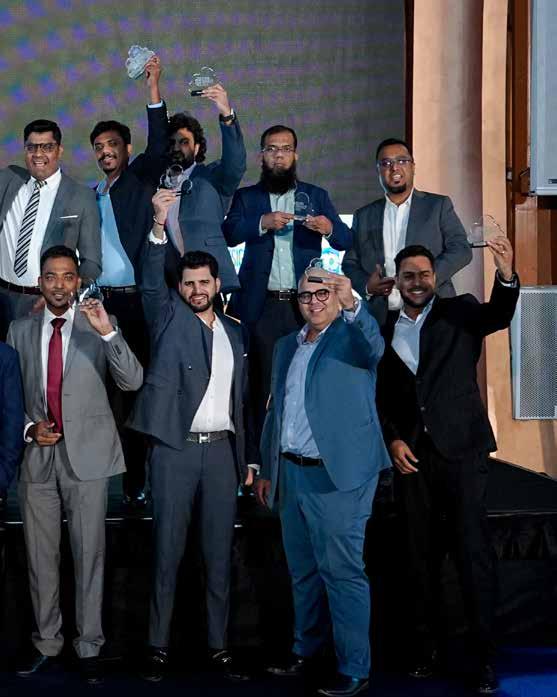
As the cloud landscape continues to evolve, the role of IT leaders, CIOs, and forward-thinking innovators becomes even more critical. They are the visionaries steering their organisations through this transformative era, leveraging cloud capabilities to foster resilience, agility, and competitive advantage. Their strategic insights and bold initiatives are pushing the boundaries of what’s possible, accelerating the adoption of new technologies and creating a future

where the cloud is the foundation for every digital endeavour.
The Cloud Connect Conference and Awards 2024 organised by CXO Insight ME, focused on not only the technological advancements shaping the cloud landscape but also the people behind them—the champions of cloud innovation. These individuals are setting new benchmarks for the industry and leading the charge in this digital revolution.
The conference kicked off with an insightful keynote address
by Andrew Rossiter, Head of the GCP Unit at Endava. In his address, Rossiter emphasised the game-changing impact of AI and cloud computing on businesses, highlighting how these technologies are transforming industries and driving innovation, particularly in the Middle East. He underscored the limitless potential that cloud computing and AI offer for the future of business.
Alfred Pang, Head of Enterprise Business Unit and Product Sales for Cybersecurity at ST Engineering, followed with a presentation that focused on the evolution of workplaces in the digital era. He discussed the challenges and opportunities that come with the adoption of cloud and digital technologies, noting their role in reshaping the future of work. Pang pointed out the importance of secure access service edge (SASE) technology, stressing, “To move ahead with SASE makes no sense without a plan to create trust zones—never trust, always verify.”
Another highlight of the event was an engaging panel discussion on the transformation of cloud security in the age of AI. The panel featured experts from leading global companies who shared their insights on how organisations can address the growing security challenges posed by cloud adoption and AI integration. The panel comprised Basil Ayass, Public Sector Sales Lead, Google Cloud; Feras Al Jabi, General Manager, ITQAN Al Khaleej Computers; Kapil Matta, Group Manager – GRC, Agthia; Ahmad Abou Zaher, Senior Solutions Engineer, Cloudflare; and Francisco Morales, Tech Manager, Globant.
The discussion covered the evolving threats in cloud security and the strategic initiatives organisations must take to safeguard their data and operations. The panellists emphasised the importance of integrating AI-driven security measures to enhance cloud protection and secure digital infrastructures in a time of rapid technological change.



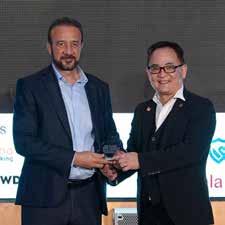
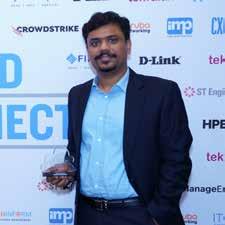




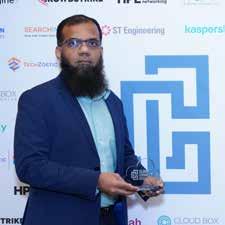

Baqar


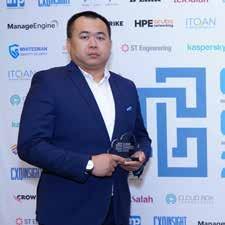



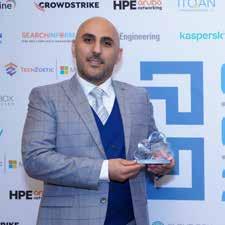

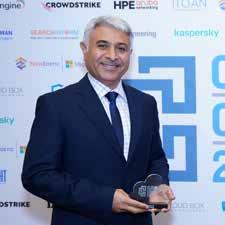

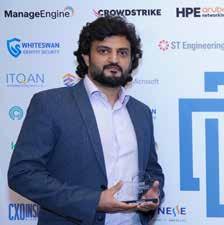







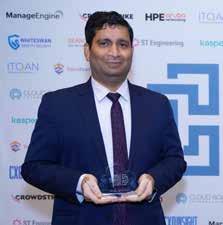





Allied Telesis have been serving the needs of our customers and the telecommunications industry since 1987.
We guarantee secure, reliable technology from a company you can trust. Our hard-earned reputation for performance and product reliability has remained constant, offering highly respected value to our customers and partners around the world.

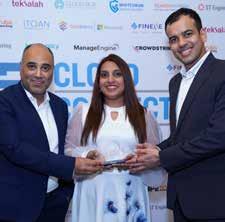
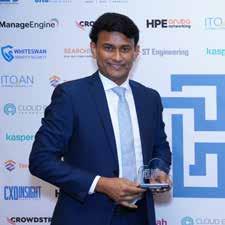








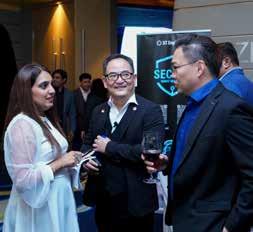



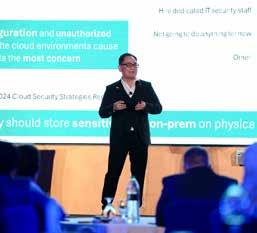






By Fares Asadi, Director of Solution Consulting MEA, ServiceNow
Traditional brick-and-mortar banks in the UAE are on the digital war-path. Emirates NBD-owned Liv and Mashreq Neo are just two examples of how venerable FSI institutions in the Emirates have embraced the digital revolution and, far from being outflanked by startups, have emulated their business models to pluck loyal customers from digital-native consumer bases.
Success in these areas has required facing up to the many realities that other banks across the region, and around the world, have ignored. The tradition of siloed departments and workforces stands in the way of data sharing. Complex workflows make action slower. The more modern bank, with its slick customer onboarding and transparent processes, is a threat that cannot be matched by banks that are stuck in neutral.
One way a legacy FSI entity can reinvent itself from the inside out, is to adopt a platform-based technology that can effortlessly integrate the latest and greatest tools as they emerge — tools like generative artificial intelligence (GenAI). This unified and homogenised ecosystem makes life easier for employees and customers alike and streamlines reporting, auditing, security, and compliance. Let’s examine this in more detail as we delve into four ways to deliver better
customer service by managing the tech mix from a central platform.
The UAE’s track record on AI is well known. And the potential for the country’s banking sector in adopting GenAI is far-reaching. When virtual-assistant bots are tied into a unified platform, they can guide human agents to the customer and product information most relevant to the real-time issue in front of them. These capabilities can also be used for self-service, something the digital-native customer craves and expects, and which is a natural part of offerings like Liv and Mashreq Neo. By starting with the bot service, the bank sifts out more standard queries for resolution by AI. And because human-like understanding comes as standard with GenAI-powered large language-models (LLMs), the customer experience is considerably more positive than with previous generations of automated helplines. Beyond the quality of conversation outcomes, the bank gets more. Chat summaries allow subsequent AI and human conversations to pick up where the previous session ended. Notetaking is automated too, allowing human agents to move on to the next customer more quickly. This is even the case in voice calls, where transcripts are required. And

the GenAI assistant goes further, drafting knowledge base articles from completed sessions to facilitate organisation-wide information sharing. What we see emerging is a knowledge-driven powerhouse of customer delight and brand loyalty.
A significant proportion of customer frustration comes from having to catalog their issue from scratch every time they contact the bank. Single-workspace solutions are a natural benefit of central-platform suites. Businesses can simplify routing across channels and departments and optimise workforce engagement. This means greater productivity, quicker responses, faster resolutions, and happier customers.
In a legacy bank, current accounts are handled by one department,

If legacy players adopt unified platforms, they can play in the same sandbox as the nimblest newcomers
savings by another, long-term investments by another, mortgages, loans, credit cards, insurance, and wealth management by others.
Each of the agents in each of the departments is trained separately and equipped differently. As such, even
when an opportunity to offer a new product is discovered, the customer experience is fragmented as they are sent to various departments and their relationship with each begins as if they were a new customer.
Single-platform environments greatly improve upon this. First, AI can identify the upselling or crossselling opportunity instantly. Second, integrated workflows can shrink approval times to — in some cases — instantaneous green lights. Third, the AI can step in again to take an employee through even the most complex products with little need for consultation with colleagues. And if the customer needs more expertise, the handover, as we have already seen, is smoother because of the single-platform approach.
The unified platform is built on a common data store that represents
the rich knowledge and experience of the bank — experience built up over decades. If harnessed effectively, this knowledge corpus can be a strong advantage in the digital era. The centralised platform will come with easy-to-use connectors to widely used applications, meaning the platform morphs to fit the unique requirements of the business. This allows the business to introduce a unified suite of tools, including AI that, in a very real sense, gets to know the business better than even its longest-serving employees.
With this infrastructure, the legacy bank is poised to introduce other kinds of AI, beyond the GenAI sensation. Predictive analytics can examine market trends for investment opportunities. Social listening tools can “survey” existing potential customers in their digital salons to discern their pain points and identify the need for new products or services (or even just additions to existing digital experiences that would boost satisfaction and net promoter scores). And because of the integration options associated with unified digital-workflow platforms, this “background” AI can feed the frontline GenAI to either automate action for customers or advise human agents in real time of opportunities to enhance experiences.
Because of lower entry barriers in digital economies, new players can emerge overnight to challenge legacy banks. Mainstay players can no longer take for granted that they will lead in technology. Just having the staff and resources to develop bespoke core-banking solutions is no longer enough when workflow platforms exist to bring out-of-the-box agility and scalability.
If legacy players adopt unified platforms, they can play in the same sandbox as the nimblest newcomers. But because of their historic buildup of market and transaction data, not to mention their sizeable customer base, a legacy bank can more easily reach the heady heights of Liv or Mashreq Neo and partake in the UAE’s digitalbanking goldrush.

With advanced technology offering precise predictions and recommendations, Asset Performance Management (APM) is now essential for optimising asset life and aligning maintenance with business goals

By Bas Beemsterboer, EAM Evangelist, IFS
In the world of asset management acronyms—CMMS, EAM, APM—the approach that can most profoundly influence your organisation but is least likely to be in place already is APM.
It has taken time for the asset management profession, the people who practice it, and the technology that supports it to come together to a place where all are in sync and focused on not just asset maintenance, but more holistically on overall organisational health. We have now reached an inflection point where the technology to make precise predictions and recommendations
based on unique operational factors is widely available and accessible. There is no turning back the clock on business intelligence; there is only the question of who will take advantage of it and transform their business performance based on information already within reach.
CMMS’s role, historically, has been tactical: to optimise day-to-day maintenance processes by managing work, spare parts, and labour skills as they pertain to the asset register.
With the advent of enterprise asset management, organisations began looking more strategically at the cost of owning an asset in the first
place, the risks of not owning it, and its value throughout its lifecycle as compared to other capital investments the organisation could make. EAM manages risks as well as assets in order to achieve the organisation’s long-term plan.
APM takes this tactical and strategic information and combines it with risk and cost data from across the enterprise. The result is a set of contextualised operational data that allows asset management professionals to not only extend asset life but do so in ways that align with strategic business initiatives and contribute to long-term success.
The key to an effective APM programme is tying together data sources from across the organisation, such as ERP, inventory management, and quality systems, for a complete picture of the overall corporate goals. Deloitte says, “Because asset performance is affected by variables in operations and material supply, companies that fail to connect APM with other technologies and data in the enterprise-wide digital supply network (DSN) will not be able to harness its full value.”
IFS uses AI and machine learning to analyse and interpret this data through time series analyses and other forecasting models, resulting in anomaly detection, failure prediction, and recommended actions. A continuous feedback loop ensures that the prediction algorithm gets smarter and more precise over time.
An important part of this process, once failure is predicted, is direction on the appropriate next step and the timing of that step. Do you repair or replace the asset? What is the optimal time to do that to maximise output and minimise cost and risk, based on your unique operating parameters? Many APM solutions provide predictions and anomaly detection, but without the accompanying suggestions for how to proceed based on this new information.
Your organisation’s longterm performance, and asset management’s contribution to it, can both grow with the help of advances in business intelligence.






Abdelilah Nejjari, Managing Director - Gulf, Cisco, discusses how AI is reshaping the region’s talent landscape and the challenges that lie ahead
As the organisations in the GCC accelerate their journeys toward digital transformation, artificial intelligence (AI) is emerging as a pivotal innovation of focus. Governments and businesses alike are turning to AI to drive innovation, boost productivity, and foster economic growth. However, with the surge in AI adoption comes a pressing need for skilled professionals who can navigate the complexities of this transformative technology.
AI’s growing importance in the GCC
AI is recognised as a transformative force across the GCC, and investments in the technology are steadily increasing. These investments are not only fuelling technological advancement but also intensifying the demand for AI-skilled professionals.
“These investments have a two-fold impact on professionals –they have increased the demand for skilled AI workers, and they have also transformed job requirements,” says Nejjari, noting that businesses are recognising the need to adapt to this shift.
According to a World Economic Forum study, 58 percent of surveyed employees believe their job skills will change significantly in the next five years due to AI and big data. This sentiment reflects the region’s growing acknowledgment of AI’s potential, as well as the need for continuous learning and upskilling among workers.
While the region’s AI talent pool is expanding, there remains a significant skills gap that must be addressed. Nejjari acknowledges this challenge, emphasising the importance of upskilling programs and attracting global AI talent to meet the increasing demand. “Generally, the AI talent pool in our region is on an upward trajectory thanks to the upskilling initiatives of existing talent and the increased migration of AI professionals into the region.”
He points to Cisco’s efforts in helping close this gap. “At Cisco, we are dedicated to equipping professionals with the skills necessary to enhance their careers and bridge the skills gap. Our commitment is demonstrated through a variety of initiatives, including the Cisco Networking Academy,” he explains. Since its inception, the Cisco Networking Academy has trained over 506,000 learners across the GCC, providing essential IT and AI skills.
Another significant initiative is Cisco’s Country Digital Acceleration (CDA) Program, which is currently active in several GCC countries, including the UAE and Saudi Arabia. Nejjari highlights the program’s role in supporting digital transformation, saying, “We collaborate with national leadership, industry, and academia to help bridge the digital divide and drive sustainable, secure, and inclusive communities.”
Nejjari stresses that the future of AI talent development in the GCC hinges on collaboration between governments, academic institutions, and the private sector. “Many countries have already launched AI learning and development

initiatives alongside comprehensive strategies to retain, develop, and attract top talent,” he says. The role of governments is particularly significant, as they continue to roll out AI strategies as part of their longterm national visions.
Cisco is actively contributing to these efforts through partnerships with governments and educational institutions to foster a future-ready workforce. Nejjari emphasises that Cisco’s initiatives are aimed at addressing educational gaps and ensuring that professionals in the region are equipped to thrive in an AI-driven economy.
Despite the progress, challenges remain in cultivating and retaining AI talent in the region. “Limited talent supply, lack of comprehension and proficiency of AI tools and technologies, gaps in the quality of education and upskilling programmes, and rapid technological changes –all these factors play a role in both retaining existing talent and attracting new talent,” Nejjari explains. Creating supportive work environments and investing in continuous training are essential to overcoming these challenges. Organisations that prioritise upskilling their workforce will not only enhance operational efficiency but also drive
We should continue to invest in existing upskilling programmes to foster sustainable growth of talent and innovation in the region
innovation and gain a competitive edge in the marketplace. As Nejjari notes, “Organisations that invest in upskilling their workforce in AI can develop sustainable and secure businesses while fostering more equitable societies.”
Looking ahead, Nejjari is optimistic about the future of AI talent in the GCC, but he emphasises that sustained efforts are needed. “It is imperative to sustain this momentum. We should continue to invest in existing upskilling programmes to foster sustainable growth of talent and innovation in the region.”
As AI continues to evolve, the region’s ability to cultivate and retain skilled professionals will be crucial to unlocking its full potential. Through ongoing partnerships between governments, academic institutions, and the private sector, the GCC is positioning itself to lead in the global AI race.
We caught up with Rick McConnell, CEO, Dynatrace, on the company’s role in AI-driven observability and local talent empowerment in the region

The Middle East, and particularly the UAE, is experiencing a rapid digital transformation, driven by ambitious national strategies like UAE Vision 2031. With a strong emphasis on AI, cloud adoption, and sustainability, the region is positioning itself as a global leader in innovation and technology. The public sector has taken the lead, with widespread modernisation efforts aimed at creating a robust digital infrastructure to fuel economic growth. As the demand for digital services and cloud-based solutions skyrockets, so does the complexity of managing IT environments, making observability and automation more critical than ever.
Dynatrace, a global player in observability and application security, has become a key player in helping the Middle East navigate these digital shifts. In an interview the firm’s CEO, Rick McConnell, he highlighted the significance of the UAE market in the company’s global expansion.
“We landed back in November 2021, and officially launched in March
2022. Since then, we’ve been heavily invested in this market, starting with our regional office in the UAE,” said McConnell. “We’ve also set up a local SaaS instance to comply with the UAE’s data residency and sovereignty regulations.”
A key differentiator for Dynatrace in the region is its focus on AIdriven observability. As businesses grapple with increasingly complex IT environments, particularly in hybrid and multi-cloud setups, the need for real-time, automated monitoring has become critical. Observability, which was once optional, is now a necessity for ensuring smooth and efficient digital operations.
“Observability is no longer a luxury— it’s mission-critical,” McConnell explained. “Manual software management is becoming obsolete as companies scale up. Automation, powered by AI, is essential to keep pace.”
In the UAE, where public sector entities are leading the charge in digital transformation, Dynatrace sees significant opportunities. The company has already aligned itself with UAE
Vision 2031. However, one of the firm’s most meaningful contributions to the region goes beyond technology: its commitment to local talent development. The company is actively working to close the skills gap by investing in Emirati talent and creating opportunities for local professionals to take leadership roles in the digital space.
“We’ve certified several local Emiratis in Dynatrace, empowering them to become future leaders in the public sector,” said McConnell. “For instance, on International Women’s Day, we celebrated three local Emirati women who achieved certification in our platform, making them among the first in the region to do so. These women are not only becoming more knowledgeable about our technology but are also being positioned to lead important public sector initiatives.”
This focus on upskilling and localisation reflects Dynatrace’s commitment to the region’s long-term growth. Additionally, the company is also working closely with partners and local businesses, offering technical certifications and training programs to ensure that they are fully equipped to implement and maximise the benefits of Dynatrace’s observability solutions.
Looking ahead, the company plans to deepen its partnerships in the Middle East, particularly with government entities and large enterprises. The company’s vision is clear: to help its customers optimise performance, reduce complexity, and improve outcomes through cutting-edge AI technology and a fully automated observability platform.
“We’re committed to delivering meaningful value, not just through our innovations but also through our local partnerships and talent development,” McConnell said. “Our goal is to enable businesses to thrive in the digital age by equipping the next generation of tech leaders in the region.”


Fissal Oubida , General Manager and Global Marketing Director – Middle East, Africa, and India, Lexar, shares insights on the evolution of data storage solutions

How has the rise of data-heavy applications like AI, gaming, and 4K video impacted the storage market in the Middle East?
The rise of data-heavy applications such as AI, gaming, and 4K video is significantly impacting the data storage market in the Middle East. We are seeing an increased demand for storage solutions and capacities. The proliferation of AI algorithms and machine learning models requires vast amounts of data for training and processing. Similarly, gaming and 4K video content generation and consumption are creating a surge in data volume. Similarly, as applications generate and utilise vast amounts of data, there’s a growing need for higher storage capacities.
We are also witnessing a shift to solid-state drives (SSDs), which have gained popularity due to their speed and reliability, particularly for applications requiring quick data
access, such as gaming and AI. As a result, traditional hard disk drives (HDDs) are increasingly being replaced by SSDs in many scenarios.
With the increasing adoption of cloud-based storage solutions, how is Lexar adapting to compete with or complement cloud services?
We are very much in tune with new trends and emerging technologies, and we remain agile to respond to market requirements and launch relevant products. With our ever-expanding range of technologically -advanced storage solutions, Lexar is confident it will thrive in a market where cloudbased storage solutions are gaining ground. In line with our product roadmap, we’ll consistently roll out a range of products, including microSD cards, internal SSDs, DRAM, and portable SSDs, which are designed to work seamlessly with multiple devices such as sports camcorders,
tablets, smartphones, and even drones. Moreover, with Artificial Intelligence beginning to transform the way we live and work, Lexar has a substantial role to play in this realm as traditional hard drives are struggling to handle the large amounts of data that AI applications generate. That’s where Solid State Drives (SSD) come in. They offer a number of advantages that make them a critical component of the AI revolution.
Lexar has reported significant revenue growth in the GCC region. What do you see as the key drivers behind this surge?
Lexar achieved a 200 percent revenue growth in the GCC region over the past two years, which has translated into a significant increase in market share and retail expansion in the region.
It’s a combination of factors that have contributed to this growth, including our in-depth understanding of the market dynamics and our genuine commitment to address the needs of this market through our range of products that are innovative, reliable, combine the best in aesthetics and practical value and offer unmatched performance.
Over the years, we have invested millions of dollars in our R&D facilities with the overarching goal of bringing to market memory and storage solutions that are technologically superior and address the evolving needs of today’s consumers.
Our product designs undergo extensive testing in the Lexar Quality Labs, facilities with more than 1,100 digital devices, to ensure performance, quality, compatibility, and reliability. Moreover, artificial intelligence is also a key element at our innovative R&D facilities and product development & testing centres.
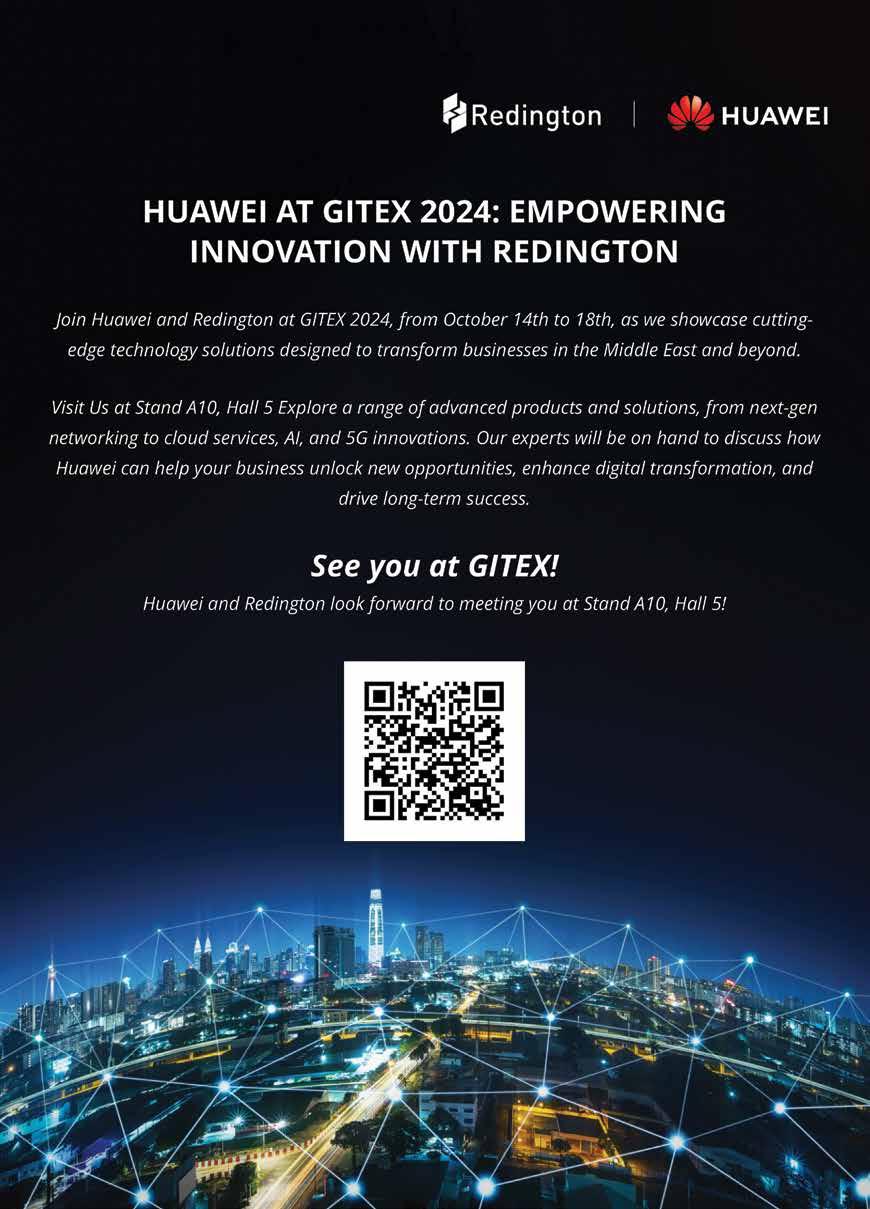

By Krishna Sai, SVP of Engineering, SolarWinds
By the turn of the decade, AI is expected to deliver a staggering $320 billion in value to the Middle East economy. With so much potential benefit to be had, regional organisations have entered the race to implement the most impactful use cases and gain an edge on the competition. But they must also do so with a fair degree of trepidation. After all, the International Monetary Fund has stated that AI will affect almost 40 percent of jobs globally, a figure that is set to be close to 60 percent in advanced economies. To avoid potentially disillusioning their greatest asset — their human capital — organisations should direct their AI investments to areas where the technology can augment employees rather than make them redundant.
One application which perfectly meets this criterion is that of IT Service Management (ITSM). The IT skills shortage in the Middle East is well documented — by some estimates, the region needs over 50,000 additional IT experts to fill digital transformation roles. This places a premium on top talent, which is often scooped up by the region’s enterprise scale organisations. Directing AI expenditure towards ITSM can help overcome a key impact of this shortfall, and make advanced IT service capabilities accessible to a broader range of businesses.
GenAI makes effective ITSM achievable for any organisation Traditionally, robust ITSM solutions
have been reserved for larger enterprises with substantial resources to invest in technology and skilled IT workers. For many small and medium-sized businesses (SMBs), the cost of implementing advanced and sophisticated ITSM solutions has historically been a significant barrier. In the UAE for example, where the nation’s 550,000 plus SMEs contribute as much as 63.5 percent of the non-oil GDP, extending enterprise grade ITSM to this critical segment could yield significant economic advantage. And GenAI does this by providing scalable ITSM features that do not require extensive financial investment or skilled workforces.
GenAI in ITSM helps SMBs to perform complex ITSM functions without needing specialised teams. Tasks that once required significant manual effort can now be automated, freeing up resources for other more strategic or creative work, and advanced tasks that once required robust manpower can now be achieved with often understaffed and overstretched teams. By leveraging GenAI-enhanced ITSM, SMBs can achieve advanced reporting and analytics, streamline workflows, and support training initiatives more effectively. AI-driven analytics empower SMBs by processing vast datasets swiftly, offering detailed insights that aid in IT issue resolution and decision-making.
In IT service desks, GenAI revolutionises workflow management by automating routine tasks and

providing intelligent assistance. This automation optimises productivity by allowing IT professionals to focus on more complex issues, thereby improving efficiency and service quality. For instance, AI can autonomously handle incident triage, categorisation, and prioritisation, ensuring swift and accurate resolution of IT issues. This streamlined process not only enhances operational efficiency but also boosts employee satisfaction and overall service delivery to end-users, both internal and external.
Furthermore, AI enhances training and skill development within SMBs’ IT teams. In the Middle East, more than half of employees (54 percent) trust in employers’ ability to stay updated with the latest trends and encourage them to apply their newly acquired skills. Organisations can prove themselves deserving of this trust by leveraging AI-powered personalised

learning experiences that enable IT professionals to continuously acquire new skills and stay updated with evolving technologies. These AI-driven training programs adapt to individual learning needs, helping ensure efficient skill enhancement despite limited organisational resources. By fostering continuous learning, AI empowers SMBs to maintain competent IT teams capable of effectively managing AIdriven ITSM operations and supporting organisational growth.
GenAI and human collaboration are key to powerful ITSM
GenAI’s contribution to democratising ITSM can also be understood by exploring the relationship between the technology and the people using it. Despite some reported concerns about AI replacing human jobs, the reality is that effective GenAI in ITSM is designed to work alongside IT professionals, not replace them.
Industry professionals agree with this: A recent SolarWinds IT Trends Report showed that surveyed IT workers are generally not worried about AI taking over roles. Instead, they see AI as a valuable tool that enhances their capabilities and helps achieve business goals.
The key is ensuring that the AI is built to work for human users. To achieve this, it’s important to consider frameworks like AI By Design, which has a set of pillars to establish optimal practices around AI. One of those pillars is “Simplicity and Accessibility” — AI experiences should be seamless and intuitive, preventing fatigue and streamlining decision-making. GenAI empowers IT professionals to make better decisions but does not make those decisions itself. Human professionals remain essential for validating and implementing GenAIrecommended solutions in a real-world context. The symbiotic relationship
The symbiotic relationship between IT professionals and GenAI can be viewed as a partnership allowing the highest productivity, efficiency, and effectiveness
between IT professionals and GenAI can be viewed as a partnership allowing the highest productivity, efficiency, and effectiveness.
Human oversight is also crucial in AIdriven ITSM operations to ensure that AI tools function correctly. IT professionals monitor AI-enhanced tools, intervene when necessary, and adjust to improve performance. This oversight helps prevent potential issues and ensures that AI tools are used responsibly and effectively. By combining AI’s processing power with human judgment, organisations can achieve a higher level of operational excellence.
GenAI excels in incident management and root-cause problem solving, but these functions must also work in conjunction with human oversight. AI can quickly analyse incident patterns, identify root causes, and suggest remediation steps. IT professionals can then review these suggestions, make adjustments as needed, and implement solutions. This collaborative approach helps accelerate incident resolution, minimise downtime, and improve overall service quality.
GenAI’s integration into ITSM might seem like it’s reaching an inflection point, but its impact is just beginning to scratch the surface.
GenAI simultaneously elevates and democratises effective ITSM. Executed with a human-centric approach, it can be a deeply effective way to empower IT teams and empower the critical SMB sector to contribute even more significantly to regional economies.


By Vibhu Kapoor, Regional Vice PresidentMiddle East, Africa & India, Epicor
Many supply chains end with the consumer. Even B2B enterprises are commonly part of a chain that terminates at a B2C link. The modern consumer, therefore, has great influence on the way a significant chunk of the economy operates. And that same modern consumer expects businesses to behave ethically and to respect the environment.
In the Middle East, where the last two COP summits were held, sustainability has become a regional focus. Qatar announced its National Environment and Climate Change Strategy (QNE) in 2021 as a means to fulfil the environment pillar of the country’s National Vision 2030. Saudi
Arabia started the National Energy Efficiency Program (NEEP) in 2008 and followed up in 2010 with the launch of the Saudi Energy Efficiency Centre (SEEC) and the King Abdullah City for Atomic and Renewable Energy (KACARE). The UAE government established the Ministry of Climate Change and Environment, which has authored a range of regulations and conventions on sustainability and green practices. And at the Egypthosted COP27, the UAE government unveiled its Net Zero 2050 Charter. While these moves are admirable and necessary, we would be remiss if we did not acknowledge the challenges manufacturers face in complying. Heavier industries play a
huge part in economic diversification, but they face growing material and shipping costs. Fortunately, the Internet of Things is on hand to help. IoT solutions have allowed the emergence of smart factories, where data insights from shop floors and supply chains feed shrewd decision-making at every link in the manufacturing process — sourcing, production, and distribution.
The goals are reductions in materials waste and carbon output, and digital technologies can deliver at scale. But to be clear, these are new technologies. Legacy systems come with inefficiencies, including wasteful use of energy, because of the extensive physical infrastructure involved. Servers use electricity, heat up, and require even more electricity to power cooling solutions. These setups represent a relatively large carbon footprint. The answer is a migration to circular economy models.
The Qatar Foundation already has a plan for the circular economy, Saudi Arabia established the National Center for Waste Management (MWAN), and the UAE set up a Circular Economy Council. Subsequently, we have seen shifts in strategy across these economies as enterprises explore ways








to comply. All this motion has opened doors for technology providers that can support sustainability efforts. It all starts with the supply chain. Cloud-based enterprise resource planning (ERP) solutions can unite with manufacturing execution systems (MES) to offer net-zero compliance functionality that preserves the bottom line. A 2023 Epicor Industry Insights global report showed 96 percent of enterprises in a range of industries use some variant of cloud ERP. The cloud’s advantages include the ability to expand the use of technology with little to no business downtime, but cloud adoption also leads to lower onsite energy use and enables the remote monitoring of warehouses and factory floors.
We have come a long way in our ability to decarbonise, thanks to advances in AI and wireless connectivity. But now, we must go further and dig into our complex supply chains. Integrated ERP systems are ideally placed to analyse supply-chain data and calculate compliance costs. Through such visibility comes the ability to make products both profitable and affordable while complying with the eco-wishes of regulators and consumers. Sustainable supply chains come about through accurate information on product quality, traceability, and repairability. Data insights also arm decision makers against external shocks like logistics

without negative impact tomorrow is as good a definition as any for
issues and inflation, leading to more agile and resilient operations. The business is reborn. A new culture emerges, one in which carbon accounting — the practice of quantifying direct and indirect greenhouse emissions — is second nature, as is the pursuit of goals to reduce those emissions. ERP has always been a core tool for manufacturers to monitor everything to do with their products and the materials used to make them. Through automation, ERP can work quietly in the background to identify opportunities for improvement. Whether the enterprise is a B2C or B2B operator, it can provide its customers with green-related information that will stand up to scrutiny. Claims like these will be key differentiators in the years ahead. Cloud-based ERP helps manufacturers drill down into every aspect of the production process and each element of the supply chain to discover the potential impact on the organisation’s portfolio. Visually rich dashboards give at-a-glance overviews of costs, revenues, shipments, and emissions. Seeing the connections between them, business leaders can take meaningful action. Knowing that carbon emissions per shipment was too high in a given period leads to a slice-and-dice of that data to reveal the source, and hence the opportunity for action.
Laundry list of benefits
Over time, a business with this level of visibility and control over its manufacturing process will settle into a global community of sustainability champions with much greater ease than an organisation that is still wrestling with last decade’s systems. Sustainability is a winning proposition with a laundry list of short- and long-term benefits — easier audits, the favour of regulators, a brighter brand, and better business prospects. Profitability today without negative impact tomorrow is as good a definition as any for sustainability. The region is definitely heading in the right direction but those leading the charge are those who use terms like “circular economy” and “carbon accounting” in their corporate literature and in everyday speech. The same pioneers are likely also making liberal use of the phrase “cloud ERP”. Makers, movers, and sellers will be compelled to move towards sustainable practices, one way or another, or risk becoming irrelevant. Using resources more slowly than nature replaces them is a tough challenge, but fortunately we know enough about what we should be doing to come up with goals that preserve profitability and affordability. All that remains is to measure what we actually do and adjust it until it meets the benchmark. To that end, cloud ERP is our ideal instrument.



By Qasem Noureddin, Managing Director, Eaton Middle East
The UAE has rapidly established itself as a hub of digital innovation, driven by a strong commitment to economic diversification and digital transformation. With ambitious initiatives like We the UAE 2031 and the UAE Net Zero by 2050, the nation is setting new benchmarks for sustainable development in the region, and a key factor in achieving these
goals is the development of robust data centre infrastructure.
Data centres form the backbone of the UAE’s digital economy, and their significance will only increase as organisations adopt transformative technologies such as 5G, AI, and edge computing. Building resilient, efficient, and scalable data centres in the UAE’s challenging environment, structured with extreme heat,
humidity, and dust, demands a novel approach. Conventional strategies are insufficient. Success requires a holistic, multidisciplinary strategy that balances performance, sustainability, and adaptability.
By focusing on six foundational principles, organisations can address immediate operational challenges and prepare for future growth. The Power of Six integrates advanced digital tools, system design strategies, and sustainability practices to create data centres that are resilient, scalable, and aligned with the UAE’s vision for a greener future.
Every data centre begins with its power infrastructure, and in a climate as demanding as the UAE’s, component selection is paramount. The harsh heat, humidity, and dust can severely impact
6,500



The future of data centres will be influenced by AI, 5G, and the increasing importance of edge computing
downtime is unacceptable. This makes advanced asset management and condition-based monitoring essential. By leveraging digital twins, AI, and machine learning, data centres can monitor equipment in real-time and predict failures before they occur. Implementing digital twin technology plays a major role in reducing downtime. This enables maintenance to be performed precisely when needed, optimising the lifespan of critical components by anticipating issues rather than merely reacting to them. Continuous monitoring becomes more critical in environments like the UAE’s, where factors like high heat can severely impact the performance of critical infrastructure.
IT equipment and cooling infrastructure are two major power consumers. Data centre design often focuses on individual components without considering their collective ecosystem. The third principle of the Power of Six emphasises integrated system design, optimising interactions between components like power distribution and cooling systems. This reduces energy waste and enhances overall efficiency.
important to select the right equipment to improve efficiency. As an example, advanced cooling technologies and the integration of renewable energy sources present further opportunities to enhance energy efficiency and minimise environmental impact.
The UAE’s investment in renewable energy is transforming various industries, including data centres. The country is making major progress in shifting from gas power plants to solar, other renewables, and nuclear to reduce carbon emissions.
Solar energy installations are experiencing an upswing in the UAE, driven by advancements in technology, cost reductions, and supportive policies. Solar generation in the country has been steadily increasing and is expected to reach 13.66 TWh by 2028. Moreover, projects in the UAE have shown that utilising solar power can reduce energy costs significantly.
traditional equipment, accelerating wear and increasing failure rates. By opting for components specifically engineered for extreme conditions, such as high-efficiency transformers and robust materials, organisations can enhance the longevity and reliability of their data centres.
However, durability alone is not enough. Understanding the interactions between components is crucial. A holistic design, from grid to chip, ensures optimal performance, minimises losses, and reduces operational complexity. This comprehensive approach not only extends equipment lifespan, but also reduces the risk of costly downtime.
In today’s fast-paced digital economy,
By designing systems that integrate cooling with power distribution and energy management, organisations can significantly lower operational costs while maintaining optimal performance. Solutions such as Eaton’s Brightlayer provides real-time data to optimise performance and reduce latency, enabling faster, data-driven decision-making.
Energy efficiency is a strategic imperative, especially in a region where sustainability is central to national goals. In line with the UAE’s commitment to Net Zero by 2050, data centres play a vital role in realising this vision.
By prioritising energy-efficient solutions and utilising digital tools to monitor consumption, organisations can reduce their carbon footprint while driving cost savings. This makes it
As the region transitions to solar and other renewable energy sources, data centres must be equipped to manage the variability these sources introduce. Integrating renewables allows data centres to decrease their reliance on non-renewable energy while contributing to the UAE’s sustainability goals. This transition requires careful energy flow management and the ability to balance supply fluctuations with demand.
The future of data centres will be influenced by AI, 5G, and the increasing importance of edge computing. This evolving landscape necessitates flexibility in design. The final principle of the Power of Six ensures that data centres are not only built for current demands but can also adapt seamlessly to future challenges.
The Power of Six transcends being just a framework; it is a blueprint for the future of data centres in the UAE. It provides a roadmap for creating data centres that are ready to meet the demands of today’s digital economy while advancing the UAE’s vision of a greener, more sustainable future.
What's the best cybersecurity event?

26-28 NOVEMBER 2024
Riyadh Exhibition & Convention Center, Malham Saudi Arabia
SCAN HERE TO REGISTER

Feras Al Jabi, General Manager, ITQAN, on the evolution of systems integration in the region and the company’s role in driving digital shifts
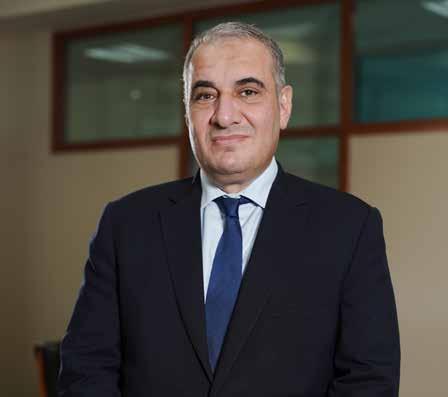
How has the systems integration space in the region evolved over the years?
The systems integration landscape has changed dramatically over the years, especially in our region. When I first started, the focus was primarily on deploying PCs and local networks within organisations. That was the big thing in the ‘90s. But as technology advanced, we saw a shift towards more complex solutions like document management systems, healthcare information systems, and eventually e-commerce and e-government platforms. Today, we’re dealing with even more sophisticated technologies, like cybersecurity solutions, highperformance computing, data analytics, and AI.
The UAE has always been quick to respond to global trends, and we’ve seen this firsthand as government services moved from being primarily web-based to mobile-driven, data-
centric, and now heavily reliant on AI. It’s a fast-paced market here, and the systems integration space has had to evolve rapidly to keep up.
How has ITQAN contributed to the progress and shifts in the market?
At ITQAN, we’ve been at the forefront of these shifts for over 40 years.
We’ve played a key role in many of the UAE’s most significant digital transformation initiatives across both the public and private sectors. From the early days of local networks and office automation to today’s focus on cybersecurity, cloud computing, and AI, we’ve consistently been one of the first to introduce and implement new technologies in the region.
Our partnerships with global technology providers have allowed us to bring cutting-edge solutions to our clients in industries like defence, healthcare, education, oil and gas, and government services. It’s because of
this commitment to innovation and our ability to deliver complex, largescale projects that ITQAN has earned a reputation as one of the top five systems integrators and solutions providers in the UAE, GCC, and beyond.
What bottlenecks are organisations facing in their transformation journeys? How has ITQAN helped in addressing them?
The biggest challenge organisations face in their transformation journeys is often the pace at which they need to move. The problem is that many companies start their transformation with the technology rather than focusing on how it can serve their overall business goals. We believe it should be the other way around –businesses need to determine how competitive they want to be and then look at how technology can support that vision.
Another bottleneck is the resistance to change from within the organisation. Without buy-in from users, even the most advanced technology won’t be successful. That’s why we always emphasise that technology should be seen as an enabler, not the driving force. At ITQAN, we help businesses clearly define their goals first, and then deploy the right technologies to support those goals.
In cybersecurity, for example, we offer a full range of services, from advisory to post-deployment support. We don’t just sell a product—we provide a full solution that aligns with the specific needs and threats each business faces. This comprehensive approach has helped our clients overcome many of the common obstacles they encounter on their digital transformation journeys, ensuring that their technology investments are both effective and future-proof.



Nothing has debuted its latest smartphone, the Phone (2a) Plus, an upgraded version of its mid-range Phone (2a). The new device brings several hardware and software improvements, aimed at enhancing performance, photography, and overall user experience.
The Phone (2a) Plus is powered by the MediaTek Dimensity 7350 Pro 5G chipset, which is exclusive to Nothing. It boasts an 8-core CPU running at 3.0 GHz, offering nearly 10% faster performance than its predecessor. Gamers will also benefit from the ARM Mali-G610 GPU, which delivers a 30% boost in gaming performance.
On the camera front, the Phone (2a) Plus introduces a triple 50 MP system. The front-facing camera has been upgraded to 50 MP, allowing for 4K video recording at 30 frames per second. The main 50 MP rear sensor is supported by Optical Image Stabilization and Action Mode for smoother video capture, particularly in low-light conditions.
The device features a 6.7-inch FHD+ AMOLED display with a 120Hz adaptive refresh rate and a peak brightness of 1300 nits. Its thin bezels result in a screen-to-body ratio of 91.65 percent.
In terms of battery life, the Phone (2a) Plus packs a 5,000 mAh battery, offering

Acer has announced the release of the Iconia X12, a new tablet set to hit the EMEA market in January 2025. The device features a 12.6-inch AMOLED display with a resolution of 2560x1600, a
Sony has introduced its latest wireless earbuds, the LinkBuds Fit, designed for comfort, audio quality, and everyday usability. Featuring Air Fitting Supporters and Soft Fitting Earbud Tips, these earbuds are built for a secure fit during physical activity. The Fitting Supporters reduce pressure on the ears while providing a stable hold, accommodating various ear sizes.
The LinkBuds Fit also include ambient sound control with an Auto Ambient Sound Mode, which adjusts surrounding sound levels automatically based on the user’s environment. For noise cancellation, the earbuds are powered by Sony’s Integrated Processor V2, the same chip used in the highly rated WF-1000XM5, offering adaptive noisecancelling performance.

up to two days of use on a full charge. It supports 50W fast charging, enabling a full day’s charge in under 20 minutes.
The Phone (2a) Plus comes with Android 14 out of the box and will receive three years of software updates.
60 Hz refresh rate, and 400 nits of brightness, making it suitable for both work and media consumption. Audio is delivered through four stereo speakers, designed to enhance the multimedia experience.
The Iconia X12 runs on Android 14 and is powered by the MediaTek Helio G99 processor, built on a 6 nm architecture. This chip is designed to handle tasks efficiently, providing smooth performance for apps and media streaming. The tablet includes 8 GB of LPDDR4X RAM and up to 256 GB of UFS storage, with support for a microSD card up to 1 TB for additional storage.
For photography and video calls, the device is equipped with an 8 MP front camera and a 13 MP rear camera with flash and autofocus. Connectivity options include Wi-Fi 5, Bluetooth 5.2, GPS, and USB Type-C. The tablet weighs 600 grams, is 6.7 mm thick, and comes with a 10,000 mAh battery capable of quick charging.
In terms of sound quality, the LinkBuds Fit come equipped with a Dynamic Driver X that enhances vocal clarity and reduces distortion. They also support High-Resolution Audio Wireless and DSEE Extreme for improved audio fidelity. Additional features include Multipoint Connection, allowing the earbuds to connect to two devices simultaneously, Auto Play, and Wide Area Tap for controlling music playback by tapping near the ear. With a battery life of up to 21 hours and an IPX4 water resistance rating, the LinkBuds Fit are geared towards users looking for versatile, high-performance earbuds for everyday use.









Sunil Paul, MD, Finesse, explores the emergence of Identity and Access Management as a Service (IAMaaS) as a crucial solution for enterprises aiming to enhance security and streamline operations

Businesses today are facing numerous challenges in managing identities and access controls. With more employees working remotely, the rise of cloud computing, and the explosion of digital platforms, traditional on-premise identity management systems are becoming outdated and inadequate. Enter Identity and Access Management-as-a-Service (IAMaaS), a suite of cloud-based, solutions that are transforming how businesses handle user access to their IT resources.
What is IAMaaS?
At its core, IAMaaS provides a centralised, cloud-based service that allows businesses to manage employee identities and control access to a range of systems and applications. Whether it’s for a small startup or a multinational enterprise, IAMaaS offers flexibility,
scalability, and security, factors that are crucial for today’s increasingly digital business environments.
IAMaaS represents a paradigm shift from traditional on-premises identity management systems, such as Microsoft Active Directory, to a more dynamic, cloud-based solution.
With traditional on-premise solutions, it is no longer feasible to manage identities and access with a patchwork of add-on tools and manual oversight. IAMaaS centralises the management process, allowing organisations to monitor and control access from a single platform, regardless of where their systems are hosted—whether onpremise, in the cloud, or across hybrid environments.
This transition is crucial as it aligns with the broader trend of leveraging cloud technologies to drive efficiency and scalability. By outsourcing IAM
operations to specialised providers like Cyberhub Finesse, organisations can focus on their core business objectives while ensuring robust identity management.
Key benefits of IAM-as-a-Service
1. Enhanced security: One of the standout benefits of IAMaaS is improved security. By using features like Identity Governance & Administration (IGA), Multi-Factor Authentication (MFA), Single Sign-On (SSO), and Role-Based Access Control (RBAC), Privileged Access Management (PAM), businesses can ensure that users only have access to the resources they need, minimising the risk of data breaches. Additionally, since IAMaaS is delivered from the cloud, it is constantly updated with the latest security patches and protocols, providing protection against new and emerging threats.
2. Cost efficiency: Traditional IAM systems often require significant upfront investments in hardware and software. IAMaaS, on the other hand, operates on a subscription model, which means businesses can avoid hefty capital expenditures. Moreover, since IAMaaS automates many identity management tasks, it reduces the need for dedicated IT personnel to manage access control, resulting in further savings.
3. Scalability: One of IAMaaS’s most attractive features is its ability to scale with the business. Whether you have 50 employees or 50,000, IAMaaS platforms can seamlessly adapt to your organisation’s size and needs, making it ideal for growing companies.
In the long term, IAMaaS offers strategic value by fostering a culture of security and compliance. As cyber threats continue to evolve, having a robust IAM framework in place is essential for mitigating risks and protecting organisational assets. Furthermore, the agility provided by IAMaaS allows businesses to quickly adapt to changing market conditions and technological advancements, ensuring they remain competitive in the digital age.

















